Wat Pa Tam Wua Forest Monastery – Vipassana in Thailand
Some do it to find themselves, others just to disconnect for some time. For me, the four days at Wat Pa Tam Wua Forest Monastery were a mix of both.
After my mother’s death, some things in my life were just too much for me. I had also changed a lot to be near her during her last months. Now I didn’t know where my place was anymore. Friends asked why I couldn’t just restart where I left off the year before. At the beginning, I didn’t know how to answer that. I just knew it felt wrong.
And so it came, that I wanted to spend a few days in silence. Only with my thoughts accompanied by the monks‘ and the other participants‘ chanting.
Two side notes: First, you can stay between two and ten days as long as you want. You can just go there without kind of „booking“. I know that sounds a bit scary, but it’s really no problem. And second, I originally wanted to stay there for five nights, but then I shortened it to four, as you will read below.
How to get to Wat Pa Tam Wua Forest Monastery
The trip by minivan takes about four hours from Chiang Mai. Book a trip to Mae Hong Son (about 250 Baht) and tell the driver that you want to be dropped off at Wat Pa Tam Wua Forest Monastery.
The road is curvy and can be quite stomach-churning. I have done this trip several times and I have to say that it seems to change. Sometimes I get extremely nauseous, sometimes I can relax and enjoy the landscape, even look at my phone. But maybe it is also due to the driving style of the respective driver…
If you don’t want to take all the curves at once, you can make a stopover in the famous hippie village of Pai. This village is about halfway between Chiang Mai and Mae Hong Son City. In the province of the same name you are already here and can enjoy the special flair of the village on the night market of the main street.
Alternatively you can take the bus from Bangkok directly to Mae Hong Son and from where you can take the minivan to Pai or Chiang Mai. From there it takes about one hour.
Arriving at Wat Pa Tam Wua Forest Monastery
Wat Pa Tam Wua Forest Monastery is paradise. The compound is quite large although it won’t feel like it if you spend a lot of time there. Try to explore it a little bit and maybe sit quietly at the idyllically rippling brook or the big pond.
The most important place for you is the Dharma Hall. This is where the meditations take place, or in the case of walking meditation (I explain the different meditations in the following), this is the starting point. By the way, men and women sit separately, which the volunteers always remind you of in case you forget. There is an area with cushions and there are chairs at the edge, so if you don’t want to or can’t kneel for that long, it’s absolutely no problem. You can also switch from the seat cushion to the chair during the meditation if you are in pain.
This is also where the „reception“ is located, meaning your first point of contact and your hub in case you have any questions.
Next to the reception is a small library, where you will find numerous books on Buddhism, as well as the book Walk to the Knower, which is a kind of guide for your time doing Vipassana in Thailand.
On the wall opposite to the library there is a little ‚buffet‘ waiting for you: tea, coffee and sometimes powder for hot chocolate.
On the other side of the shelves are tables where you can read during the day and at the appropriate time this area turns into the dining room.
White clothing
When I got there, I got my white clothes. You can either bring your own or borrow some there. It’s free and you can always go to the cottage with the clothes if you need a new t-shirt or trousers. Right next door is a cottage with a laundry. There you can hand in used clothes.
Kuti vs dormitory
Then, I was assigned a Kuti – a small hut. I was lucky enough to get a Kuti of my own. Because there are dormitories there, too, where dozens of people sleep.
For me, personally, it was important to be alone with myself in silence. I probably wouldn’t have been very happy in a dormitory.
Whether it’s a dormitory or a Kuti, your ‚home‘ is very simple: you get a mat that to put on the floor, a blanket and a pillow. I personally got very cold at night, although I additionally had my own blanket and slept with long clothes. I think the cold just goes through the wood. Fortunately, I always travel with a hot water bottle, so it was ok. But I was never really warm at night.
Even if you have your own Kuti, there’s nothing else in the room. There is a small bathroom attached. However, there is no hot water and you will not find mirrors in the whole monastery.
Silent Badge
It’s not obligatory to go silent at Wat Pa Tam Wua as it is the rule in other Vipassana places. Therefore, 90 percent of the other visitors chatted and laughed. This is not very pleasant and makes it extremely difficult if you want to be silent yourself. If you want to try yourself to stay silence during your stay, you can always take a Silent Badget from the reception and put it on.
I tried to stay as far away as possible from the talking people, but that is not always possible.
Besides, I had an awful lot of questions buzzing around in my head. And I am not talking about the questions that silenced me and needed silence to be answered. I’m talking about questions for which one has to talk, because one can’t find the answer in oneself, like „Where is the monastery shop or café?“ or „How do I get to the caves and how far away are they?“ Also, many questions about meditation or Buddhism in general started to come up in my head. It was hard for me to concentrate on meditation when I wanted to know in which language people chanted, what Dharma was or why monks‘ robes were brown/orange and their heads usually shaved.
Routines at the monastery
Every day follows the same pattern. There is a timetable that must be adhered to. As a guest you commit yourself on arrival to always participate in at least the activities in bold print. Absence requires good reasons.
The timetable
- 05:00 Morning meditation in your kuti.
- 06:30 Rice offering to the monks.
- 07:00 Breakfast.
- 08:00 Morning Dharma talk, and meditation class.
- 10:30 Food offering to the monks.
- 11:00 Lunch.
- 13:00 Afternoon Dharma talk and meditation class.
- 16:00 Cleaning the area and helping in the monastery.
- 17:00 Free time.
- 18:00 Evening Chanting, meditation and Dharma talk.
- 20:00 Meditation on your own, or have tea, coffee, hot chocolate & relax.
- 22:00 Rest time.
Meals
Buddhist monks are vegans. Therefore you will not find any animal products at the monastery. Whether you like it or not: During your time here you have to eat vegan or bring your own food.
At 6:30 am the Rice Offering will take place at the Dharma Hall. All guests line up on their knees to give each monk a spoonful of rice in a bowl. This is a tradition of Buddhism that can be observed every morning not only in monasteries and temples, but also in the streets of Thailand and other Buddhist countries.
Only then you can help yourself: There is a buffet with Thai breakfast. So you’ll mainly find rice, rice soup, vegetables and maybe roots and fruits.
Lunch is at 11:00 am, which also follows an offering. This time you don’t offer rice to the monks, but the food in general, which is then part of the buffet. This is of course vegan again.
Lunch is the last meal of the day. After lunch there is some fruits and otherwise only the small shop at the other end of the compound where you can buy noodle soup, chips or soft drinks.
Meditation
There are three mandatory meditation sessions per day. First of all everyone meets in the Dharma Hall and before the morning and midday meditation one of the monks talks about Buddhism. Afterwards, there is a 45-minute walking meditation. The main point is to be mindful while walking and let your mantra become one with the walk. The recommended mantra is Bud (when inhaling) – dho (when exhaling), but you can also find your own mantra. This was important to me because Bud-dho didn’t mean anything to me. It worked much better when I found my own, meaningful mantra after two days.
After the walking meditation we continue with 45 minutes of sitting meditation in the Dharma Hall and directly afterwards 15 minutes of Lying meditation. Theoretically there is still the standing meditation after Buddha’s teachings, but in Wat Pa Tam Wua it is not part of the program.
The morning and noon meditation is roughly the same. The only difference is that the monk in charge stays after the noon meditation and answers questions. This was also a situation where I was unsure whether I’m allowed to ask questions wearing the Silent Badge.
The evening meditation is a little different from the other meditations. It starts with chanting. There is a Chanting Book for this and the monks tell you which page to open. This is followed by a 40-minute Lying Meditation and then a short speech by the leading monk.
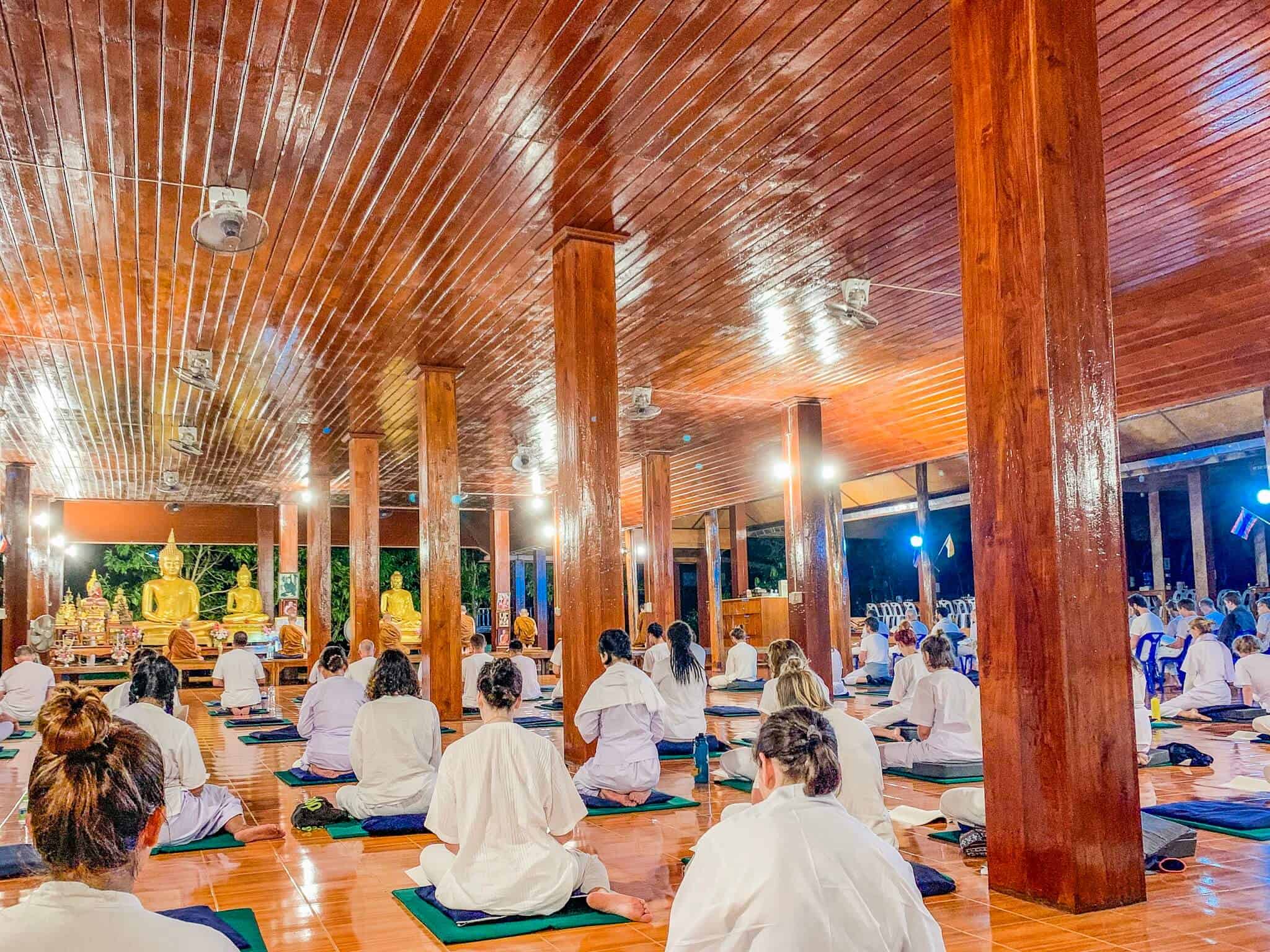
The chanting is in three languages: Thai and English I recognized immediately, but I didn’t know the third language. Then I found out that it was Pali.
On the last pages of the Chanting Book there is a FAQ section, which I unfortunately only found out about on my last day. A lot of questions are answered there and I wish I had known about it at the very beginning of my stay.
Cleaning and helping
This point is optional, but from my own experience I can tell you that sweeping leaves, for example, can be incredibly meditative. This is one of the tasks that you have to do every day and which you can almost never finish. It is important that you practice mindfulness. So it is not the point to talk to others while doing it. But in practice it happens naturally and I am also guilty. The peer pressure was just too strong and I’m really bad at ignoring what’s going on around me.
Free time
At first glance, it may seem like you have a lot of free time. But believe me: you will not have a lot of time for yourself in Wat Pa Tam Wua. For example, I had the problem that I usually go to bed at midnight at the earliest. Among other reasons, that has something to do with the fact that Thailand is five or six hours before Germany and midnight in Thailand is 6 pm in Germany. This means that I’m usually chatting with friends, family and customers until late at night. Also, my posts in social media do not go online until around 6 pm German time.
Even being offline at Wat Pa Tam Wua, I could not get used to this completely different rhythm from one day to the other. I had problems to fall asleep before midnight and then I was completely tired the next day. Because of this I often fell asleep during the meditations.
But you should try to take your time and explore the compound and surroundings. It is beautiful! Also the caves are worth a trip. Plan about two hours for it.
My experience and thoughts
About being silent
For me, it was clear: Even if it is not obligatory to go silent in Wat Pa Tam Wua, nothing else would be possible for me.
However, I started to think about the silence. Am I allowed to talk to myself when I am alone? Can I ask short questions like „Where is the toilet?“ What is the reason for the silence?
I came to the conclusion that silence has nothing to do with the physical state of not talking, but with the fact that you are left alone with your thoughts. So in my opinion it’s okay to talk to yourself even if you wear the Silent Badge. But on the other hand, it’s not ok to listen to conversations and somehow be passively part of them, even if you’re not talking and actively participating in the conversation. Because that way you would no longer be alone with your thoughts, but you would be thinking about the conversation.
On the second day, I swept the leaves in front of my Kuti. After about ten minutes a girl came and asked if she could help me. I nodded. Another girl came five minutes later. And then another one. All three of them had no Silent Badge and chatted happily about meditation and the meaning of mindful cleaning. So it didn’t take long until I decided that there was no point in remaining silent if I followed their conversations mentally and laughed with them, even without answering. Because by my definition I had already broken the silence IN MY HEAD… So I put my Silent Badge aside.
To cut a long story short: Although I managed to keep silent for a few hours a day and really stay with myself, I didn’t manage to keep silent all the time. If I had really wanted to pull through with it, I would have had to go somewhere else in a situation like when I was sweeping the leaves in order to continue being undisturbed and mindful.
About being offline
BUT… yes, there is a but. I went to Wat Pa Tam Forest Monastery for a reason. I wanted the answer to a burning question I was trying to find in the silence. And I found it! Surprisingly, I did not find it in the silence, although I believe that the answer was already within myself. But for some reason I could not see it. I could only see it when I was talking to the people I met at the monastery and talking to them about my question!
Then, I had a thought:
Maybe I still found the answer in the silence. Not in the silence of my voice or my thoughts, but in the silence of the modern world. Without all the „noise“ that phones and computers create inside of us… Because even if I have not managed to stay physically silent, I have managed to stay offline and, therefore, silent in social media and messengers. So there was no noise or anything else from the outside world. I’m sure that this „silence“ had a huge impact and was much more important than not talking!
When I understood all this and found my answer, I decided to leave the monastery earlier than planned. Although I enjoyed the stay and my answer was a great success, I also realized that it was not good for my health to stay there:
I was always cold (I’m just not made for walking barefoot all the time, and in my little Kuti I was cold day and night), I was always hungry (no food between 11am and 6:30am is not for me), and I was always tired (as I said before, the times just don’t match my biorhythm and I couldn’t get used to it). In addition, half of the visitors were sick, wore thick scarves, drank tea, coughed and took medication from the publicly accessible medicine cabinet.
I was therefore not surprised when, on the same day I left, I got a sore throat, fever, and then a pretty bad cold that accompanied me for four weeks.
Final thoughts
I wrote at the beginning that I did not know why I could not pick up where I had left off the year before. After my time in Wat Pa Tam Wua Forest Monastery I knew it: I am not the same person anymore.
We all keep changing constantly. Normally we don’t even notice it, because we continuously adapt our decisions and lives to these changes. At least as far as we can. But for eight months I was in the situation that I did not adapt anything to my preferences, but only to my family. After that you can’t go back as if nothing had ever happened.
Of course, the time in the monastery does not change reality. I was and still am very busy to process the death of my mother and I still don’t know exactly who this new Barbara actually is, who is so much more anchored in Germany and Europe than the old Barbara.
Nevertheless, I am grateful for the days of multi-layered silence, for the hours of meditation, for the valuable insights into the life of Buddhist monks. I wouldn’t want to miss this experience at all!
The Chiang Mai Guide for Digital Nomads
Newsletter
Subscribe to my newsletter so I can keep you posted about my life of travels and as a digital nomad! You will never miss a new blog post, a new ebook or where my next adventure is going to bring us. Because it’s never going to be boring!












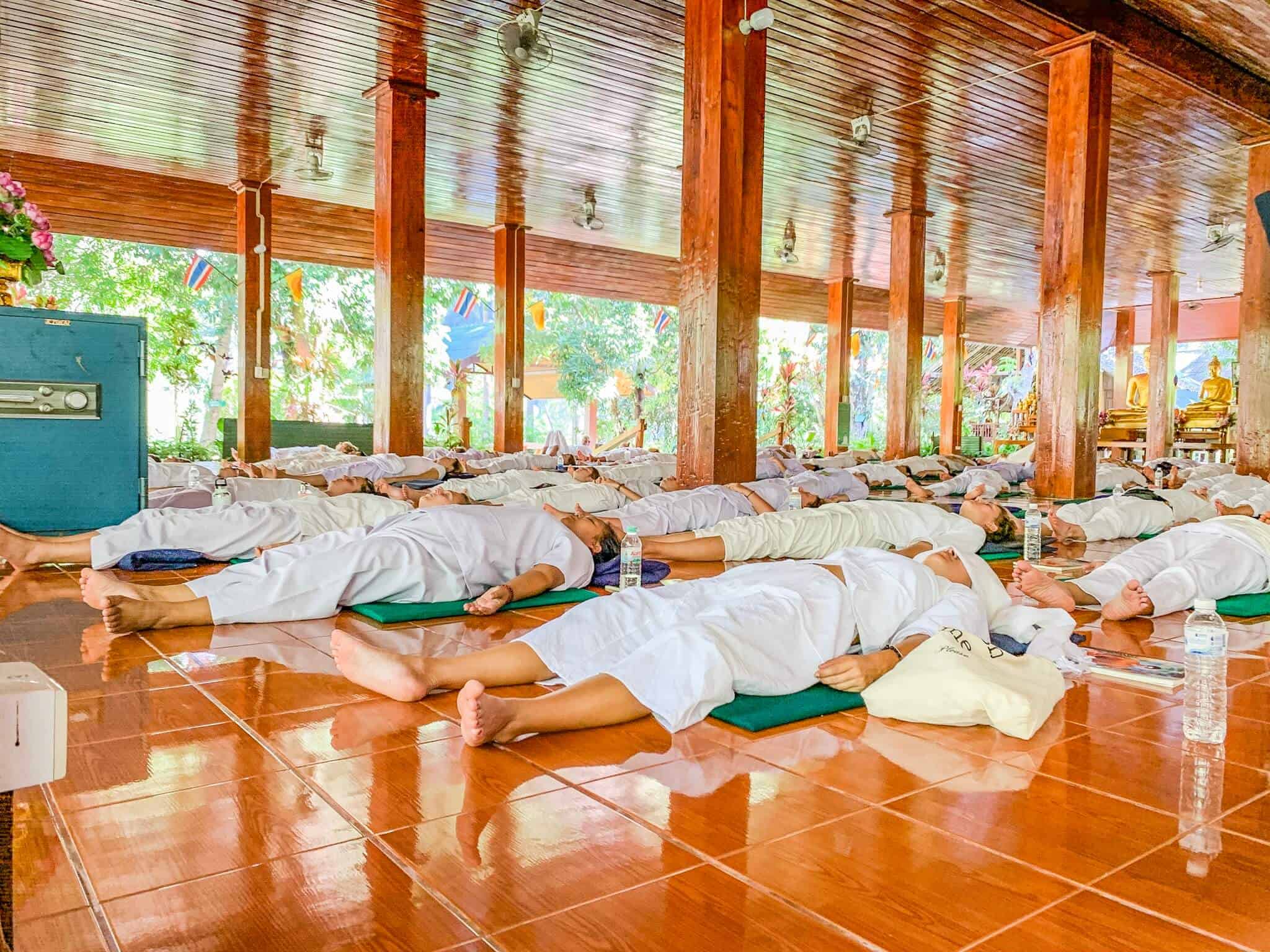


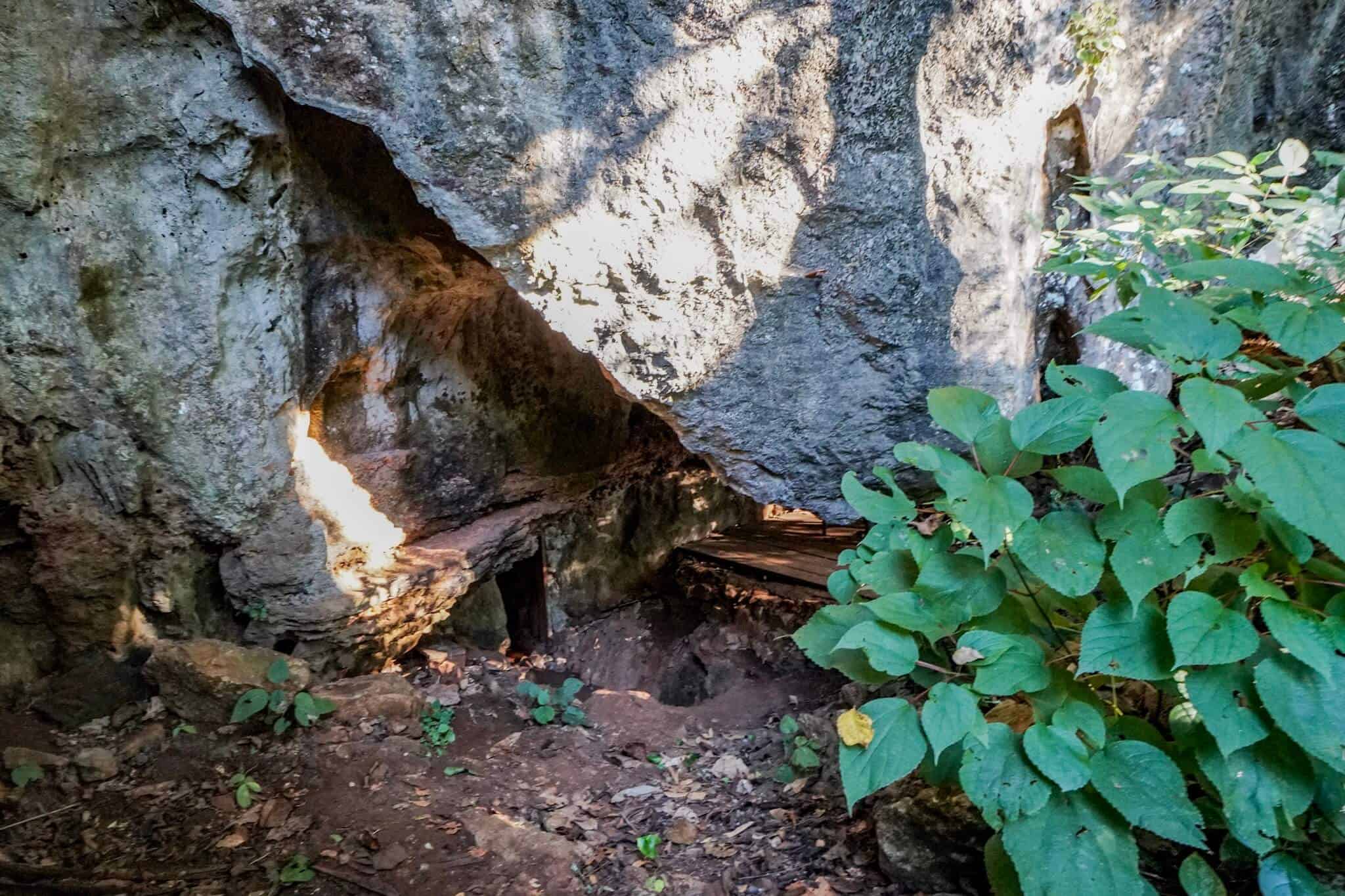



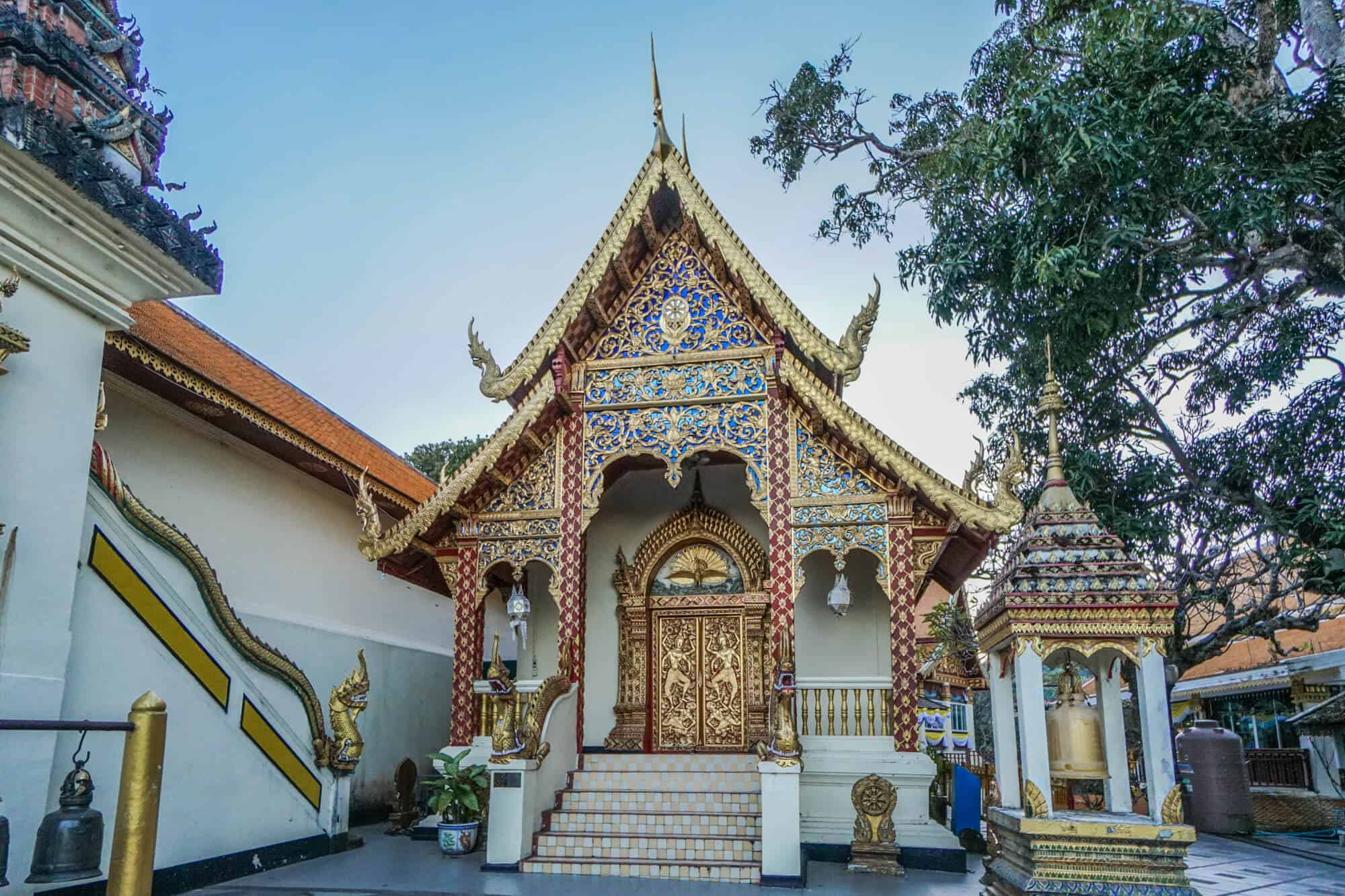

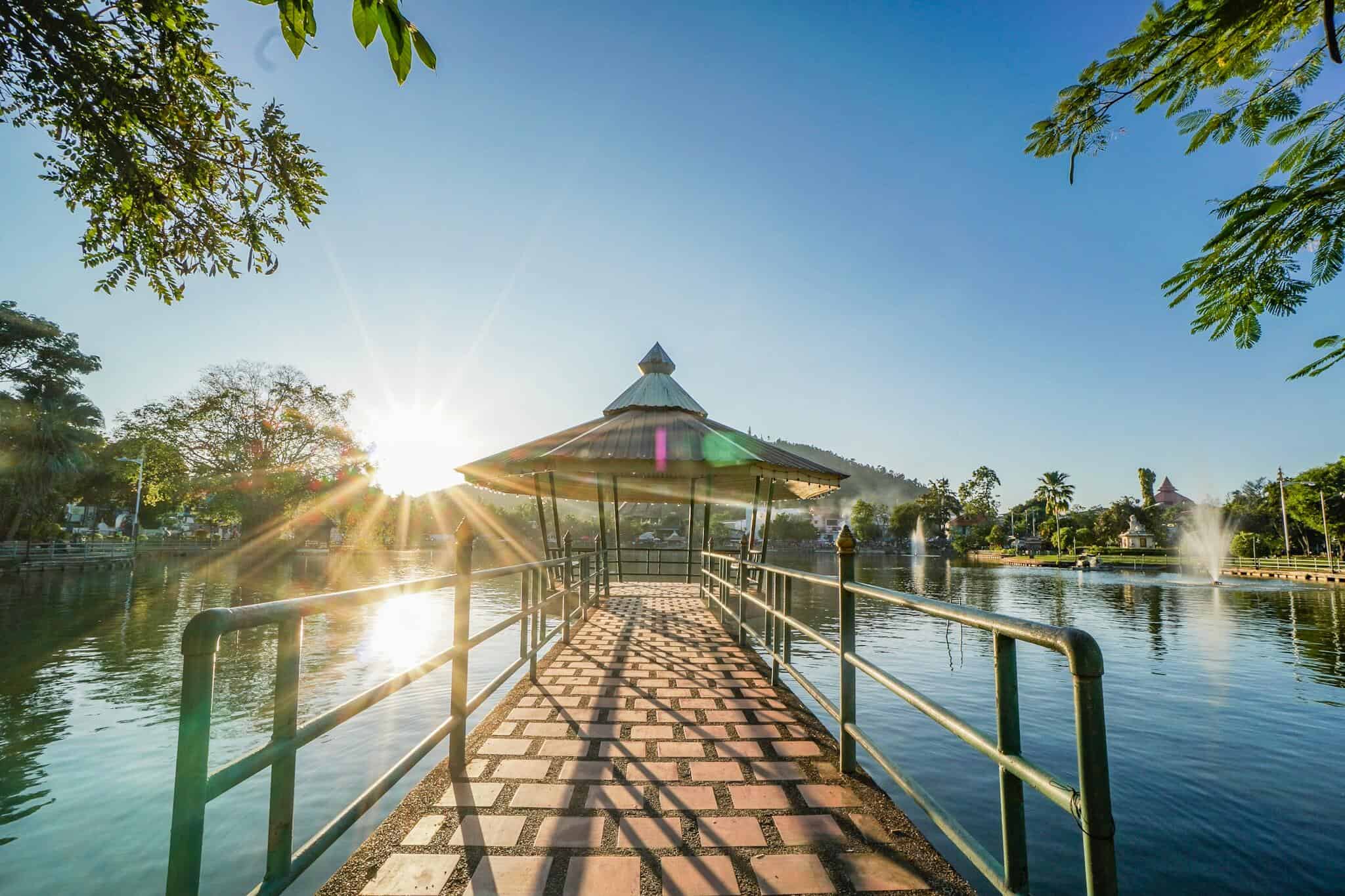
Dear Barbara,
Thanks for posting this article so that we could understand the living conditions in Wat Pa Tam Wua Forest Monastery.
Knowing some of the difficult situations you faced in the monastery and I wonder why you did not get help from the person incharge in the Monastery? Like to get a thicker blanket to keep yourself warmer at night?
I noticed you have some questions during the stay in the Monastery why can’t you check it out in the library? Why we have to be silent while practicing mediation retreat? This is the good opportunity for you to seek answers from your inner self by way of mediation, seeking advice from the abbot, looking up from the Buddhism books…..
Hope you have time to go there again and you may get prepare to know more about the practice of mediation, silence, cleaning works, your mind and your body.
Wish you are well!
Hi Chin (hope this is you name),
thanks so much for your comment! I appreciate you taking the time to ask. To be honest, I can’t 100% remember but I’m pretty sure that I did ask for more blankets. I even had my own travel blanket with me. I think I had three blankets but even additionally sleeping fully dressed I was still cold.
Regarding your comment about why I didn’t look up my questions in the library or talking to the abbot…. I have to admit that I was in a very difficult emotional situation. My mother had died shortly before I went there and I was overwhelmed. I didn’t know how to cope with all this. Maybe I was also embarrassed because I was so confused about my thoughts, my emotions, my feelings. Also, the time between the meditations is very limited and you have to choose wisely about what you do with it. Maybe my choice wasn’t wise 😀
Take care!
Barbara